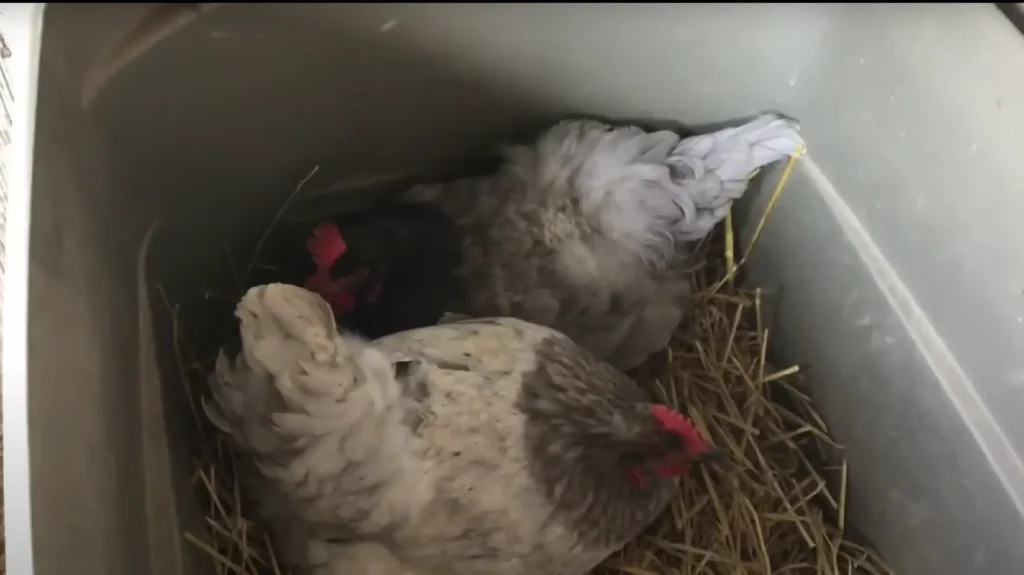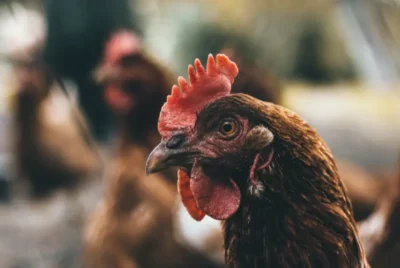Blue Plymouth Rock Chicken: Guide to Your First Flock
If you’re considering raising chickens for the first time, the Blue Plymouth Rock Chicken might be the perfect choice for your inaugural flock. These charming birds are visually appealing with their blue-grey feathers and offer practical benefits that make them ideal for beginners.
In this guide, we’ll introduce you to the beautiful world of Blue Plymouth Rocks, covering their characteristics, care, and why they are an excellent choice for novice chicken keepers.
Table of Contents
Blue Plymouth Rock Chicken Overview
- Egg Color: Light Brown
- Egg Size: Large
- Egg Production: Averaging 5-6 eggs per week and around 290 eggs yearly.
- Disposition: Calm & Docile
- Hardiness: Cold Hardy
- Broody: No
- Hen Weight: 4.5 lbs
- Rooster Weight: 5.5 lbs
- Appearance: Lavender-blue feathers with gold or grey feather patterns around the neck.
- Lifespan: 5 to 10 years.
- Breed Origin: Native Andalusian male and Plymouth Barred Rock female
- Temperament: Calm and friendly temperament
What is a Blue Plymouth Rock Chicken Breed?
The Blue Plymouth Rock Chicken, often simply called the Blue Rock, is a chicken breed originating in the United States. It was developed as a variation of the original Plymouth Rock chicken breed, created in the late 19th century. Blue Plymouth Rock breed results from a cross between a native Andalusian male and a Barred Plymouth Rock female, combining desirable traits from both parent breeds.
This breed has been gaining popularity not only for its beauty but also for its proficiency in egg-laying. As a result, they have become a sought-after choice among poultry enthusiasts and small-scale farmers, offering a combination of aesthetics and egg production capabilities.
Blue Plymouth Rock Chicken Appearance
Feather Color
Blue Plymouth Rock chickens are known for their beautiful blue-grey feathers, which make them look unique and attractive. Some even have a touch of lavender in their feathers, adding to their beauty.
Size
Blue Plymouth Rocks are classified as medium-sized birds. Roosters typically weigh around 5.5 pounds, while hens tend to be slightly lighter, averaging approximately 4.5 pounds. Their size is just right for keeping them in backyards.
Body Shape
Blue Plymouth Rocks have a well-balanced body. It’s kind of rectangular and looks strong and sturdy. This shape makes them good for laying eggs and, if needed, for meat. Their balanced body shape is a testament to their versatility and adaptability in various poultry-keeping scenarios.
Combs and Wattles
They have red combs on their heads and red, dangly bits under their chins called wattles. These parts help them stay comfortable and look colorful against their blue-grey feathers, making them even more appealing.

Blue Plymouth Rock Chicken Personality
Temperament
Blue Plymouth Rock chickens have a friendly and calm personality. They are usually easy to get along with and make good pets, especially if you have children. They aren’t aggressive or nervous, which makes them enjoyable to have around.
Hardiness
These chickens are hardy, so they can handle different weather conditions well. They’re especially good at dealing with cold weather, so you don’t have to worry about them in the winter. They are robust and can stay healthy in various environments.
Noise Level
Blue Plymouth Rock chickens are not noisy. They won’t cause a lot of commotion or loud clucking, making them suitable for neighborhoods or areas where noise might be a concern. They are quieter than other chicken breeds, so they won’t disturb you or your neighbors much.
Blue Plymouth Rock Chicken Egg-Laying
Egg Color and Production
Blue Plymouth Rock chickens are good at laying eggs. They can give you several large eggs, and their egg-laying performance is very good. The eggs produced by Blue Plymouth Rock hens are typically light brown. They are a good choice if you’re looking for chickens that provide plenty of brown eggs.
First Egg-Laying
Blue Plymouth Rock hens typically start laying their first eggs around 5-6 months old, depending on their hatch date. This is the age when they become mature enough to produce eggs regularly.
So, if you raise these chickens and have kept track of their hatch date, you can expect to get your first eggs from them at this age. During their early stages, providing them with proper care, including warmth through a heat lamp when needed, can ensure their healthy development and eventual egg-laying.
Broodiness
Blue Plymouth Rock chickens are not very prone to going broody. “Broody” means they won’t sit on eggs to hatch them. They are more focused on laying eggs rather than hatching them.

So, Is Blue Plymouth Rock Chicken Good For You?
Raising Blue Plymouth Rock chickens for your first flock is an excellent choice for novice chicken keepers. Their appealing appearance, calm temperament, and exceptional egg-laying capabilities make them an ideal addition to any backyard or homestead.
With the right care and attention, your Blue Plymouth Rocks will provide you with fresh, delicious eggs and become delightful and endearing companions in your poultry-keeping journey.
Now that you’ve discovered the joys of raising Blue Plymouth Rocks, why not explore even more exciting possibilities in the poultry world? If you want to learn about other captivating blue chicken breeds, don’t miss our article, “Explore the Splendor: 10 Best Blue Chicken Breeds for Your Coop.” Discover a variety of beautiful blue-feathered chickens and broaden your horizons in the fantastic realm of backyard poultry. Explore the splendor today!




